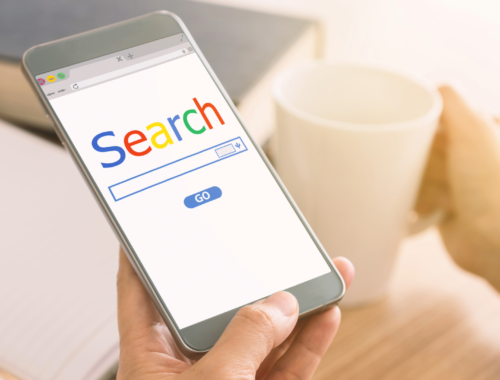Frequently Forgotten Aspects In Paid Advertising

Paid advertising is an amazing way to reach new users who do not have an existing awareness of your brand. It’s also a great way to acquire new customers. With this in mind, there are many aspects that are frequently forgotten about or unknown when a business turns on their paid ads for the first time. In the below I go over some incredibly important aspects that YOU should be keeping in mind when it comes to your advertising going forwards.

Tracking
Tracking is absolutely vital in paid advertising and is often not implemented. Without this in place you are not only blindly optimising/running your campaigns. You also miss out in gaining a level of understanding as to what campaigns, keywords, audiences, ads etc. are the most conversion friendly and resonate best with the user. From the data you receive you can also gain insight as to where you could be better utilising your budget and scaling your account.
Tracking implementation also provides you with new opportunities in regards to creating new audience and remarketing lists. These list types allow you to both recapture previous non-converting visitors and target new audiences based on the actions users previously made on your website.

Intent Of The User
The higher the intent of a user, the more likely they will carry out positive actions upon entering your site. Targeting those with a higher intent means showing your ads to users who are actively seeking out your ad as appose to you seeking them out.
Capturing a user’s attention requires less work when intent is higher, as you are not forcing your ads onto them but more so they are looking for you. Instances of low intent would be when you are interrupting a user whilst they are doing something i.e. watching a video. Whereas instances of high intent would be when they are searching for your product or service.
High Intent Targeting Opportunities Vs Low Intent Opportunities
Facebook/Instagram Ads Higher Intent Placements
- Facebook News Feed
- Instagram Feed
- Facebook Marketplace
- Instagram Explore
- Facebook Search Results
- Search
- Search Remarketing
- Youtube Discovery (Google only)
- Shopping
Pinterest Higher Intent Adgroup Placements
- Search
Facebook/Instagram Ads Lower Intent Placements
- Facebook Right Column
- Stories
- In-Stream
- In-Article
- Youtube In-Stream
- Gmail
Attribution In Paid Advertising
Paid advertising is often the first point of contact between your business and the user. With this in mind the likelihood of paid ads being responsible for the vast majority of first click/direct conversions can be relatively low. In some instances users will review other aspects relevant to your business such as reviews, social media accounts, competitors etc. before making the decision to convert.
Bearing this in mind can prevent you from making optimisation changes that may negatively impact your campaigns, such as pausing keywords or audiences that you think are under performing due to not receiving any direct conversions. In reality they may have been a touch point for a number of conversions in the “path to purchase,” and said conversions may not have been possible with these contributing touch points.
A great tool to use when investigating the attribution of your paid advertising campaigns is Google Analytics.

Conversion Window
The conversion window is the period of time between the first interaction a user makes on an ad and a conversion on your website, whether that be a form submission, a purchase or a phone call to your business.
Your conversion window is likely to change depending on the type of product or service you sell and how much there is to lose on the user’s end. When it comes to eCommerce consumers are more likely to put less thought into buying a cheap pair of shoes than an expensive pair of shoes, this is simply because there is less risk in buying something that is lower in price.
This concept can also be applied with b2b industries. These typically have a longer conversion window due to the number of decision makers and steps required in order to conclude what company is best to go ahead with.
In order to make the most of your campaigns and not face constant disappointment, it's important to consider the following factors:
- If there is the potential for retention of a client/customer, therefore giving beneficial conversions more value?
- What return do you make from a single conversion and do your profit margins allow for some flexibility in regards to spend?
- Do you offer anything that can help build consumer trust? I.e. a guarantee, returns, free delivery and tracking etc.
Competition/Demand Fluctuation
Whilst it may seem obvious, it’s often not taken into consideration. Competition and demand for a product or service can fluctuate! In months where demand is higher and by default competition is higher, factors such as the cost per click are likely to change/increase. This is due to more advertisers bidding for that click. It’s important to keep these months in mind when you are planning your advertising budget.
Whilst your budget should primarily be focused on affordability, it is worth noting that if your budget is incredibly small in comparison to the price of a single click, you are risking spending the entirety of your budget on very limited click data.
The less traffic you are able to generate due to campaign restrictions, the longer it will take to gauge an understanding of performance and generate data.
Learning Phase
When setting up any paid advertising campaign, it’s important to take into account that there will be a learning period. It is within this time that campaigns are most likely to fluctuate performance wise. The general rule of thumb is that it takes around 3-6 months for an account to be out of it’s initial learning phase. However additional factors can also impact this such as budget updates, the frequency in which major campaign changes are implemented, how often the account is being optimised etc.
During this time it is important to be patient. Making rash decisions, such as pausing your ads before you have fully tested them, may hurt your advertising in the long run. You may also be missing out on some great opportunities to acquire new prospects!

It’s Not Just About The Amount Of Traffic You Get
Of course traffic is important, without traffic you miss the opportunity to generate new business and gain an online presence. However, what’s more important than the volume of traffic you ask? This is of course the quality of traffic. Higher quality traffic allows your campaign to have the potential to be more profitable. This can prevent you from throwing your budget away on visitors that are unlikely to take interest in your products/services.
Conclusion
Keeping the above in mind can not only help take your paid advertising to the next level. It can also be the difference between a good campaign and a GREAT campaign! In this digital world that is constantly changing, it is incredibly important that you are consistently looking for both existing and new ways to upgrade your campaigns.
Looking for other ways you can improve your paid ads? Why not check out my recent posts discussing how to create PPC friendly landing pages and ways you can improve your ROAS within GoogleAds.



One Comment
Pingback: